
Учебники школьные / анг яз уч ответы
.PDF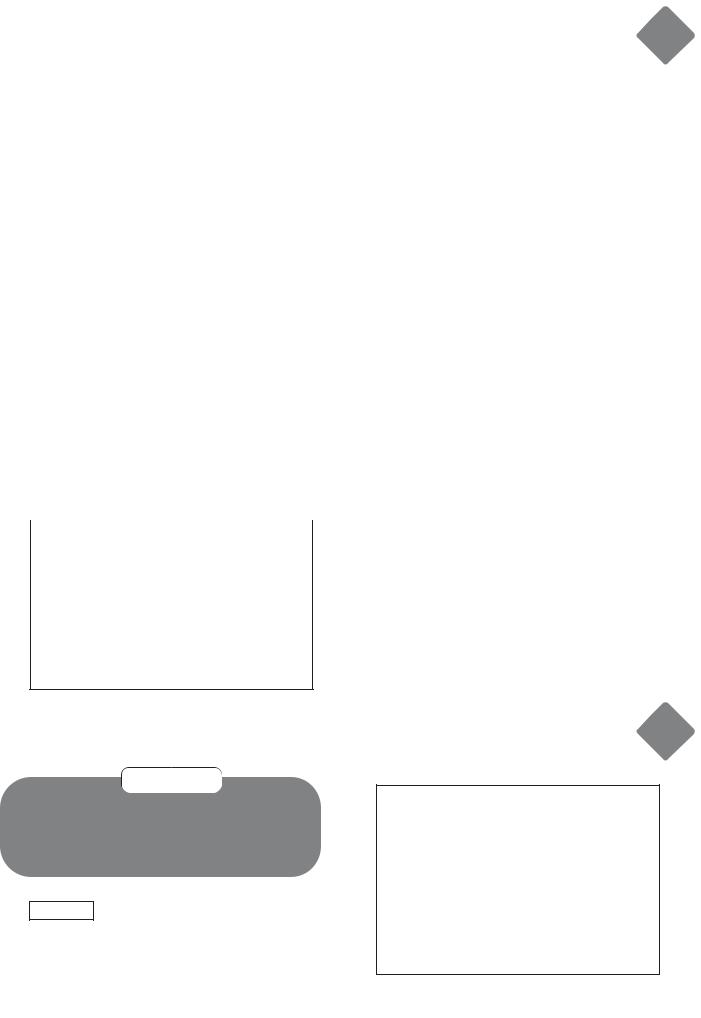
|
|
|
|
|
|
|
|
|
|
|
English in Use |
|
3f |
|||
|
|
|
|
|
|
|
|
|
|
|
||||||
|
|
|
|
|
|
|
|
|
|
|
|
|
|
|
|
|
|
Suggested Answer Key |
|
|
|
|
3 |
Police asked any witnesses to the |
|
|
|||||||
|
1 |
Have you heard of Bigfoot? |
|
|
|
|
come forward and give evidence. |
|
|
|||||||
|
2 |
I haven’t heard from Tina lately. |
|
|
|
|
The spectators at the football match |
|
|
|||||||
|
3 |
Bill is part of a secret society. |
|
|
|
|
cheering wildly. |
|
|
|
|
|
||||
|
4 |
Peter succeeded in passing his exams. |
|
|
|
4 |
Those two artists both paint in the |
|
|
|||||||
|
5 |
I’m thinking about buying a computer. |
|
|
|
|
style. |
|
|
|
|
|
||||
|
6 |
Many people go to Loch Ness in search of |
|
|
|
|
Did you know that no two |
|
|
|||||||
|
|
the monster. |
|
|
|
|
|
|
fingerprints are alike? |
|
|
|
|
|||
|
7 |
We know from experience that it is not |
|
|
|
|
|
|
|
|
|
|
|
|||
|
|
|
|
|
|
|
|
|
|
|||||||
|
|
easy to organise a family holiday. |
|
|
|
|
|
|
|
|
|
|
|
|||
|
8 |
He was nervous about taking his driving |
|
5 |
|
Focus |
Practising past tenses/Reading |
|
|
|||||||
|
|
|
grammatical correctness (gap fill) |
|
|
|||||||||||
|
|
test. |
|
|
|
|
|
|
||||||||
|
|
|
|
|
|
|
|
|
|
|
|
|
|
|
||
|
|
|
|
|
|
|
|
ñ Have Ss complete the task individually. |
|
|
||||||
|
|
|
|
|
|
|
|
|
|
|||||||
|
|
|
|
|
|
|
|
ñ Direct Ss to reread the text to check if it |
|
|
||||||
4 |
Focus |
Practising vocabulary |
|
|
|
|||||||||||
|
|
|
sense with their answers. |
|
|
|
|
|||||||||
ñ Have Ss complete |
the |
task individually and |
|
|
|
|
|
|
|
|||||||
|
ñ Invite Ss to read the text in class and |
|
|
|||||||||||||
|
|
check in their dictionaries if necessary. |
|
|
|
their answers. |
|
|
|
|
|
|||||
ñ Ask Ss to make sentences with the other words. |
|
|
|
|
|
|
|
|
|
|
||||||
ñ Check Ss’ answers. |
|
|
|
|
|
|
|
|
|
|
|
|
|
|||
|
|
|
|
|
Answer Key |
|
|
|
|
|
||||||
|
|
|
|
|
|
|
|
|
|
|
|
|
|
|||
|
|
|
|
|
|
|
|
|
1 |
was working |
10 |
had recently |
|
|
||
|
Answer Key |
|
|
|
|
|
|
|
||||||||
|
|
|
|
|
|
2 |
stepped |
|
working on |
|
|
|||||
|
|
|
|
|
|
|
|
|
|
|
|
|||||
|
1 |
sightings |
3 |
investigators |
|
|
|
3 |
followed |
11 |
were walking |
|
|
|||
|
2 |
imagination |
4 |
similar |
|
|
|
4 |
were wearing |
12 |
ran |
|
|
|||
|
|
|
|
|
|
|
|
|
5 |
were carrying |
13 |
found out |
|
|
||
|
|
|
|
|
|
|
|
|
|
|
||||||
|
|
|
|
|
|
|
|
|
6 |
noticed |
14 |
had gone |
|
|
||
|
Suggested Answer Key |
|
|
|
|
7 |
looked |
15 |
had ever found |
|
|
|||||
1 |
John Constable is famous for his paintings |
|
|
8 |
were |
16 |
were |
|
|
|||||||
|
|
of English country scenes. |
|
|
9 |
passed |
|
|
|
|
|
|||||
|
|
My cousin will show me the sights when I |
|
|
|
|
|
|
|
|
|
|
||||
|
|
|
|
|
|
|
|
|
|
|
|
|||||
|
|
visit London. |
|
|
|
|
|
|
|
|
|
|
|
|
|
|
2Small children often live in a fantasy world of their own making.
The ballerina’s movements gave the illusion she was light as a feather.
Objectives
Reading: reading for specific information; reading for lexical correctness
Speaking: giving a presentation on a famous castle/ house
1Focus Reading for specific information
ñRead through the list of people to prepare Ss for what to look for in the text.
ñSs read the text and answer the questions.
ñElicit answers from Ss around the class and discuss.
Culture Corner |
3 |
|
|
Answer Key
Lady Mary Berkeley ― A famous ghost in Chillingham Castle. She was the wife of Lord Grey of Chillingham.
Lord Grey of Chillingham ― He was married to Lady Mary Berkeley. He left her and broke her heart.
The Blue Boy ― Another ghost in the castle. Edward I ― (King of England) He stayed at the castle.

3 |
|
|
|
Culture Corner |
|
|
|
|
|
|
|
|
|
|
|
|
|
||||||
|
|
|
|
|
|
|
|
|
|
|
|
|
|
||||||||||
|
|
|
|
|
|
|
|
|
|
|
|
|
|
|
|
|
|
|
|
|
|
|
|
|
|
|
|
|
|
Reading for lexical correctness |
|
|
|
Suggested Answer Key |
|
|
|
||||||||||
|
(multiple-choice cloze) |
|
|
|
|
|
|
The castle is very old. In fact, it dates back to |
|
||||||||||||||
|
|
|
|
|
|
|
|
|
|
|
|
|
|
|
|
||||||||
|
ñ Direct Ss to read the text again paying careful |
|
medieval times. |
|
|
|
|
||||||||||||||||
|
|
|
|
attention to the words before and after each |
|
Chillingham Castle is haunted. |
|
|
|
||||||||||||||
|
|
|
|
gap then choose the best answer. |
|
|
|
The castle has more than one ghost. |
|
|
|||||||||||||
|
ñ Ss should then reread the text to ensure it |
|
The castle offers ghost tours to visitors. |
|
|||||||||||||||||||
|
|
|
|
makes sense. |
|
|
|
|
|
|
|
Edward I stayed at the castle. |
|
|
|
||||||||
|
ñ Check Ss’ answers. |
|
|
|
|
|
|
The castle has dungeons and torture chambers. |
|
||||||||||||||
|
|
|
|
|
|
|
|
|
|
|
|
|
|
|
|
||||||||
|
|
|
|
|
|
|
|
|
|
|
|
|
|
|
|||||||||
|
|
|
Answer Key |
|
|
|
|
|
|
|
|
|
|
|
|||||||||
|
|
|
|
|
|
|
|
5 |
Focus |
Giving a presentation on a famous |
|||||||||||||
|
|
1 |
D |
3 |
B |
5 |
B |
7 |
D |
|
|
castle/house |
|
|
|
|
|
|
|||||
|
|
2 |
C |
4 |
D |
6 |
C |
|
|
|
|
|
|
|
|
|
|
||||||
|
|
|
|
|
|
ñ Read through the rubric and check Ss |
|||||||||||||||||
|
|
|
|
|
|
|
|
|
|
|
|
|
|
||||||||||
|
|
|
|
|
|
|
|
|
|
|
|
|
|
||||||||||
|
|
|
|
|
|
|
|
|
|
|
|
|
|
|
understand the task. |
|
|
|
|||||
3 |
|
Focus |
Understanding new vocabulary |
|
|
ñ In groups of 3-4, Ss research information about |
|||||||||||||||||
|
ñ Refer Ss to the words in bold and explain that |
|
a famous |
castle |
or house |
and |
prepare a |
||||||||||||||||
|
|
presentation. |
|
|
|
|
|
||||||||||||||||
|
|
|
|
they |
should use |
the context |
of the text |
to |
|
|
|
|
|
|
|||||||||
|
|
|
|
ñ Invite groups to give their presentations to the |
|||||||||||||||||||
|
|
|
|
understand the meanings and match them with |
|||||||||||||||||||
|
|
|
|
|
class and ask the class for feedback. |
||||||||||||||||||
|
|
|
|
their synonyms in the list. |
|
|
|
|
|
||||||||||||||
|
|
|
|
|
|
|
|
|
|
|
|
|
|
|
|
|
|
||||||
|
ñ Elicit answers in class and check. |
|
|
|
|
|
|
|
|
|
|
|
|
||||||||||
|
|
|
|
Suggested Answer Key |
|
|
|
||||||||||||||||
|
|
|
|
|
|
|
|
|
|
|
|
|
|
|
|
|
|
||||||
|
|
|
|
|
|
|
|
|
|
|
|
|
|
|
Catherine Palace is located in the |
town of |
|
||||||
|
|
|
Answer Key |
|
|
|
|
|
|
|
|
|
|||||||||||
|
|
|
|
|
|
|
|
|
|
|
Pushkin, 25 km from St. Petersburg, Russia. |
|
|||||||||||
|
|
|
lurk ― hide |
|
|
|
|
|
|
|
|
|
|||||||||||
|
|
|
|
|
|
|
|
|
|
|
Many Russian |
tsars, including |
Catherine the |
|
|||||||||
|
|
|
bump ― bang |
|
|
|
|
|
|
|
|
||||||||||||
|
|
|
|
|
|
|
|
|
|
Great, used this luxurious palace as a summer |
|
||||||||||||
|
|
|
corridors ― passages |
|
|
|
|
|
|
|
|||||||||||||
|
|
|
|
|
|
|
|
|
home. The palace was built by Catherine I of |
|
|||||||||||||
|
|
|
rustling ― soft sound |
|
|
|
|
|
|
|
|||||||||||||
|
|
|
|
|
|
|
|
|
Russia |
and |
it |
is |
surrounded |
by |
beautiful |
|
|||||||
|
|
|
mysterious ― strange |
|
|
|
|
|
|
|
|||||||||||||
|
|
|
|
|
|
|
|
|
gardens. The palace was damaged |
in World |
|
||||||||||||
|
|
|
appear ― show up |
|
|
|
|
|
|
|
|
||||||||||||
|
|
|
|
|
|
|
|
|
|
War II |
and |
reconstruction continues. Inside |
|
||||||||||
|
|
|
dungeons ― prison |
|
|
|
|
|
|
|
|
||||||||||||
|
|
|
|
|
|
|
|
|
|
there |
is the |
Great |
Hall that |
was |
used for |
|
|||||||
|
|
|
torture ― sth that causes pain/suffering |
|
|
|
|
||||||||||||||||
|
|
|
|
|
|
receptions and formal dinners. Tourists can |
|
||||||||||||||||
|
|
|
|
|
|
|
|
|
|
|
|
|
|
|
|
||||||||
|
|
|
|
|
|
|
|
|
|
|
|
|
|
|
tour the many apartments and salons that |
|
|||||||
|
|
|
|
Reading and listening for specific |
|
|
|
were added over the years by various |
|
||||||||||||||
4 |
|
Focus |
|
|
|
|
|||||||||||||||||
|
|
information |
|
|
|
|
|
|
|
|
|
emperors. There is a museum that tells the |
|
||||||||||
|
ñ Have |
Ss |
listen |
to |
and |
read the text |
for |
|
history of this great palace and displays many |
|
|||||||||||||
|
|
of its beautiful contents. Catherine Palace was |
|
||||||||||||||||||||
|
|
|
|
interesting facts. |
|
|
|
|
|
|
|
|
|||||||||||
|
|
|
|
|
|
|
|
|
|
|
a grand home of the tsars and a valuable part |
|
|||||||||||
|
ñ In pairs have Ss tell their partner about the text. |
|
|
||||||||||||||||||||
|
|
of Russian history. |
|
|
|
|
|||||||||||||||||
|
|
|
|
|
|
|
|
|
|
|
|
|
|
|
|
|
|
|
|||||
|
|
|
|
|
|
|
|
|
|
|
|
|
|
|
|
|
|
|
|
|
|
|
|
64
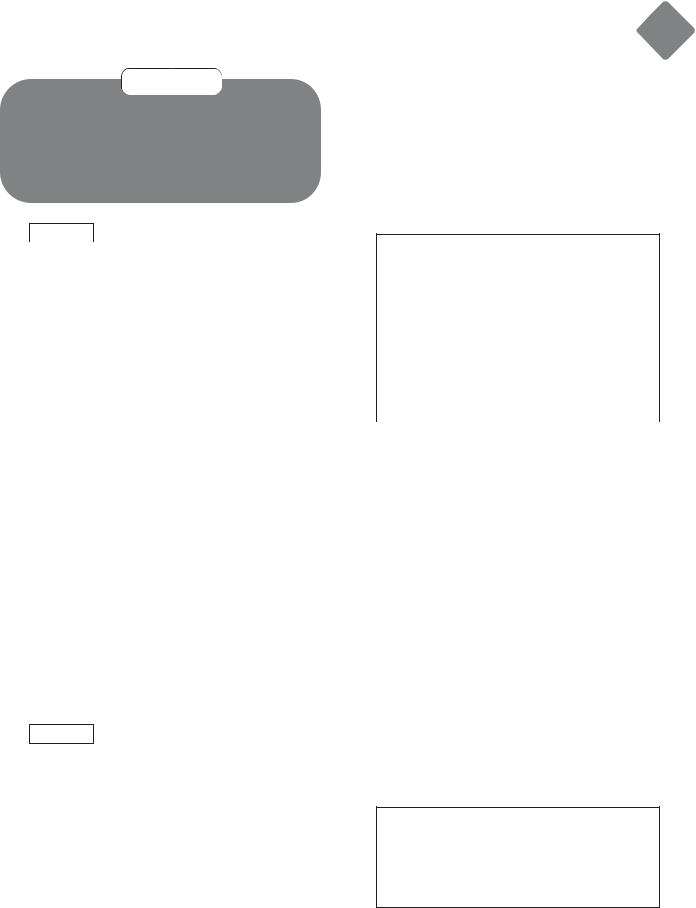
Across the Curriculum – Art & Design |
3 |
|||
Objectives |
|
|
|
|
|
|
|
||
5 |
Focus |
Reading/Listening for specific |
|
|
Vocabulary: shapes; idioms with ‘paint’ |
|
|
|
|
information (comprehension questions) |
|
|||
Reading: reading for lexico-grammatical |
|
|||
ñ Read through the list of questions in the rubric. |
||||
correctness; reading for specific information |
||||
Speaking: describing a painting; presenting |
ñ Ss read and listen to the text then complete |
|||
paintings; discussing a quote |
the task individually. |
|
||
|
ñ Invite Ss to read the text in class and check Ss’ |
|||
answers.
1Focus Presenting new vocabulary
|
|
|
|
|
|
|
Answer Key |
|||
|
ñ Refer Ss to the shapes and play the recording. |
|
|
|||||||
|
|
|
1 Cubism was popular from around the 1900s. |
|||||||
|
ñ Have Ss repeat the names of the shapes and |
|
|
|||||||
|
|
2 |
Cubism gets its name from the fact that |
|||||||
|
|
elicit what these words are in Ss’ L1. |
|
|||||||
|
|
|
|
|
artists broke down people and objects into |
|||||
|
|
|
|
|
|
|
|
|||
|
(Ss’ own answers) |
|
|
|
shapes such as rectangles, cylinders and |
|||||
|
|
|
|
|
|
|
|
cubes to represent them in a new way. |
||
2 |
|
Focus |
Introducing the topic |
|
|
3 Dali painted in the Surrealist style. |
||||
|
Refer Ss to the paintings and elicit answers to the |
|
4 |
Surrealist painters used their dreams and |
||||||
|
|
|
|
their imaginations to get ideas for their |
||||||
|
question in the rubric. |
|
|
|
||||||
|
|
|
|
paintings. |
||||||
|
|
|
|
|
|
|
|
|||
|
|
|
|
|
|
|
|
|
|
|
|
|
Answer Key |
|
|
|
|
|
|
|
|
|
|
|
|
|
|
|
|
Understanding new vocabulary |
||
|
|
Painting A uses dark/dull colours and painting |
|
6 |
|
Focus |
||||
|
|
B uses bright colours. |
|
|
ñ Refer Ss to the words in bold and explain that |
|||||
|
|
|
|
|
|
|||||
|
|
|
|
|
|
|
|
they should use the context of the text to |
||
|
|
|
|
|
|
|
understand the meanings and match them with |
|||
3 |
|
Focus |
Reading for specific information |
|
|
|
||||
|
|
|
|
|
|
|
|
their synonyms in the list. |
||
|
ñ Have Ss read the text and answer the questions |
|
|
|
||||||
|
|
ñ Elicit answers in class and check. |
||||||||
|
|
in the rubric. |
|
|||||||
|
|
|
|
|
|
|
|
|||
|
ñ Check Ss’ answers. |
|
|
|
|
|
|
|||
|
|
|
Answer Key |
|
||||||
|
|
|
|
|
|
|
|
|||
|
|
|
|
|
|
|
dull ― not bright |
|
||
|
|
Suggested Answer Key |
|
|
|
|
||||
|
|
|
|
|
viewpoints ― angles |
|
||||
|
|
Picture A is a Cubist painting whereas picture |
|
|
|
|
||||
|
|
|
|
|
element ― part/piece |
|
||||
|
|
B is Surrealist. Cubist paintings break the |
|
|
|
|
||||
|
|
|
|
|
impact ― effect |
|
||||
|
|
objects down into shapes whereas surrealist |
|
|
|
|
||||
|
|
|
|
|
|
|
|
|
||
|
|
pictures put strange images together. |
|
|
|
|
|
|
|
|
|
|
|
|
|
7 |
|
Focus |
Understanding idioms |
||
|
|
|
|
|
|
|||||
4Focus Practising word formation/Reading
for lexico-grammatical correctness (gap fill)
ñRead the study skills box with Ss and check Ss understand the task.
ñHave Ss complete the task individually and reread the text to check if it makes sense.
ñCheck Ss’ answers.
Answer Key |
|
|
|
1 |
famous |
5 |
Artists |
2 |
seeing |
6 |
representations |
3 |
original |
7 |
bigger |
4 |
different |
8 |
unusual |
|
|
|
|
ñHave Ss complete the task and check their answers in Appendix 3. Ask Ss to find similar idioms in their L1.
ñRead through their answers in class and discuss.
Answer Key
1 like watching paint dry
2 paint the town red
3 paint … with the same brush
4 paints a grim picture of
(Ss’ own answers)
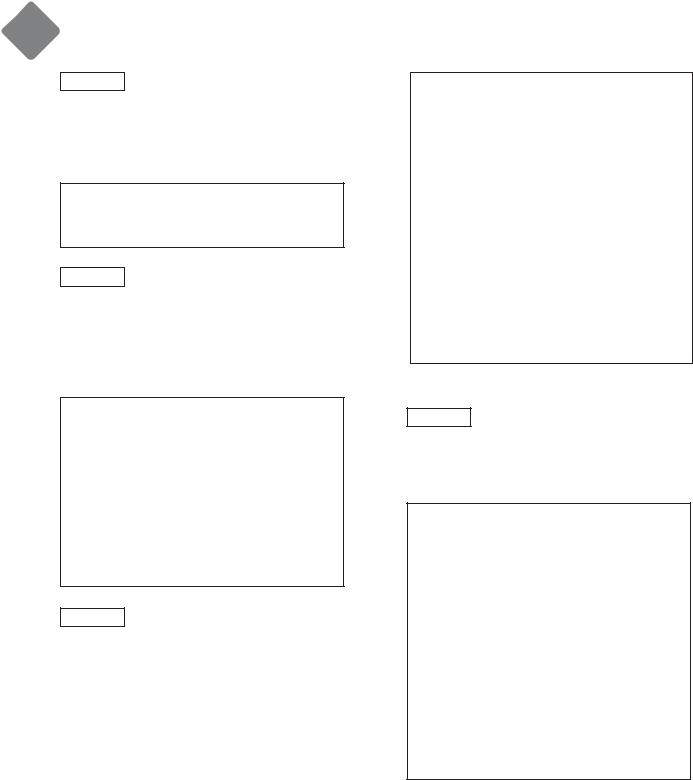
3 |
Across the Curriculum – Art & Design |
|
|
8Focus Understanding a description/Reading
to identify attitude
ñRead the description in class.
ñElicit answers to the questions in the rubric and discuss.
Answer Key
The description matches painting A. The author feels sad looking at this painting.
9Focus Describing a painting
ñRefer Ss the list of words and check Ss understand the vocabulary.
ñIn pairs have Ss describe painting B to each other, using the prompts from the rubric.
ñMonitor the activity and assist as necessary.
Suggested Answer Key (cubism)
This painting is called ‘Bread, Fruit and Table’. Pablo Picasso painted it in 1908. It shows a table with a bowl of fruit and some bread on it. The painter uses dark, green and bright yellow colours. The painting makes me feel calm.
(surrealism)
This painting is called ‘The Human Condition’. René Magritte painted it in 1935. It shows a painting within a painting. In the background I can see the ocean. The painter uses a few plain colours. The painting makes me feel sad and lonely.
Suggested Answer Key
This picture shows many strange shapes and objects. I can see swans on a smooth lake but they have the reflection of elephants in the lake. The lake is surrounded by a rocky landscape and unusual trees with a clear blue sky. The artist has used bright colours in shades of blue, brown and yellow.
This painting makes me feel curious about how Dali came up with the idea.
10Focus Presenting paintings
ñAllow Ss time to research other paintings in the same styles as in the text.
ñDirect Ss to use the prompts from the rubric in describing their paintings in class.
ñAlternatively, assign the task as HW.
ñInvite Ss to present their paintings in class and ask for feedback from the class.
Words of Wisdom
11Focus Discussing a quote
ñIn groups of 3-4 have Ss discuss the quote and whether they agree with it or not and why.
ñMonitor the activity and assist as necessary.
Suggested Answer Key
S1: What do you think this quote means?
S2: I think it is saying that some people like to draw and paint things rather than write about them.
S3: I agree. I think it is easier to express feelings through art, rather than writing about them or talking about them.
S4: Well I like to write things in my diary.
S2: Yes, but other people prefer to draw and paint about their lives.
S1: I think they are many ways to express yourself and show your emotions. People should try different ways to express themselves. etc
66

Progress Check 3
Progress Check 3 and Look at Module 4 should be done in one lesson.
Answer Key |
|
|
|
|
|
|
|
|
|
|
||
1 |
1 |
torture |
6 |
survived |
3 |
1 |
good |
|
4 |
deep |
|
|
|
2 |
rustling |
7 |
glimpse |
|
2 |
three |
|
5 |
well |
|
|
|
3 |
violent |
8 |
Sightings |
|
3 |
blue |
|
|
|
|
|
|
4 |
dull |
9 |
illusion |
|
|
|
|
|
|
|
|
|
5 |
mythical |
10 |
humped |
4 |
1 |
about |
|
3 |
from |
5 |
in |
|
|
|
|
|
|
2 |
of |
|
4 |
of |
|
|
2 |
1 |
hadn’t gone/been out |
6 |
had been eating |
|
|
|
|
|
|
|
|
|
2 |
had been walking |
7 |
was washing |
5 |
1 |
up |
|
3 |
over |
5 |
down |
|
3 |
were lying |
8 |
didn’t watch |
|
2 |
across |
|
4 |
out |
|
|
|
4 |
had mown |
9 |
had been cooking |
|
|
|
|
|
|
|
|
|
5 |
was worrying |
10 |
hadn’t finished |
6 |
1 |
d |
2 c |
|
3 e |
4 a |
5 b |
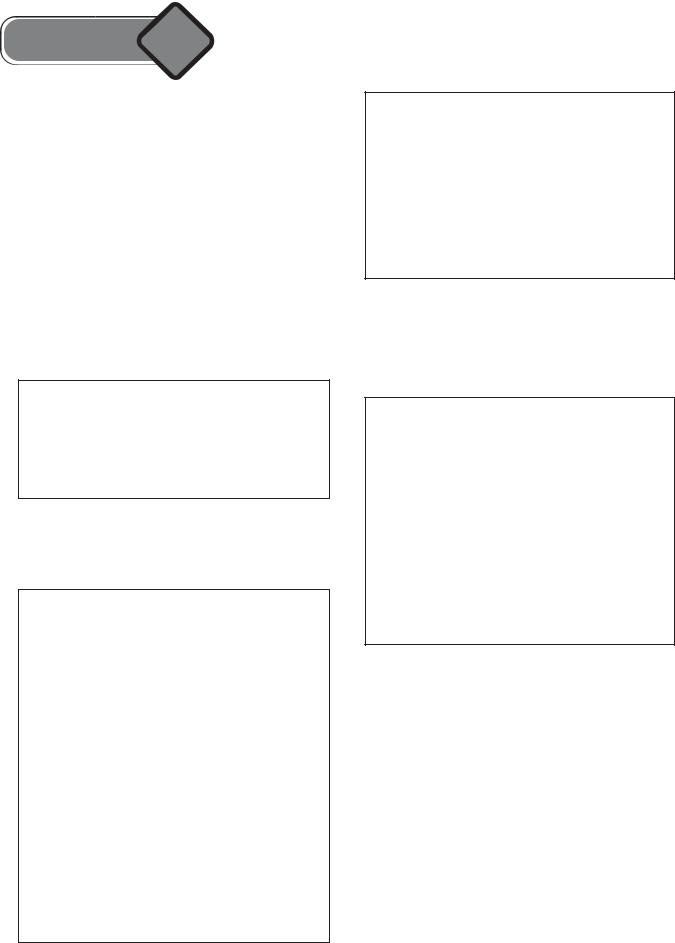
Module 4
Before you start …
ñWork through the questions with the class, asking follow up questions to encourage Ss to expand on their answers as much as possible. (e.g. Do you think dreams mean something? Do you ever have the same dream over and over again? Do you believe in ghosts? What are some famous ghosts?)
ñMake sure Ss understand this section and use the prompts to recycle vocabulary from the unit.
Look at Module 4
ñRefer Ss to the title of the module, Technology, and invite them to suggest what they think it means and what they expect to learn from the module.
Suggested Answer Key
Technology refers to all things electronic or digital which have been made for practical purposes in order to improve our lives. I think we will learn about different kinds of technology and how they affect our lives.
ñAsk Ss to look through the module and find the page numbers for each of the pictures. Ask questions to stimulate a discussion about them.
Suggested Answer Key
Focus Ss’ attention on pic 1 (p. 57).
T: What page is the picture on? S1: It’s on page 70.
T: What does it show?
S2: Different electronic parts, such as a screen from a computer.
T: What do you think the unit is about?
S3: About all the rubbish we have collected from different technologies.
T: Have you ever thrown away electronic waste? S4: Yes. I once threw out an old mobile phone, but
I sent it to recycling.
Pic 2 (p. 58)
What does the picture show? What kinds of things do you think robots can do? What do you think robot will do in the future? Do you think robots will improve our lives?
Pic 3 (p. 66)
What is this a picture of? What kinds of technology do you use? Does it make your life better? Why or why not? What technology would you like to have or use in the future?
Pic 4 (p. 60)
That does this picture show? What is the unit about? What problems have you experienced with a computer? How did you feel?
Find the page number(s) for
Allow Ss time to browse through the module and find the items. Ask them to explain what each item is and elicit simple information about each of them.
Suggested Answer Key a word map (p. 60)
What is a word map? (a map that organises words into meaningful groups to help build vocabulary) What words are in this map? Do you think the map helps you to understand and remember the words?
speech bubbles (p. 66)
What is a speech bubble? (the exact words that someone says placed in a balloon/bubble shape above/next to the person saying the words) Where do we see such bubbles? What do these bubbles say? How do they relate to the unit?
Explain that the module has:
―a Culture Corner
―a Going Green section
Ask Ss to look at the relevant pages and elicit what each section is about (The Gadget Show, E-waste).
Listen, read and talk about …/Learn how to …/ Practise …/Write/Give …
Select Ss to read through the list of items that will be covered in the module. If necessary, explain any new vocabulary. Ask Ss to go through the list and tick any items they think they know or can do, put a cross next to the ones they do not know and a star next to the ones they think will be the most useful. Select Ss to report on which items they have ticked or put a star next to.
68
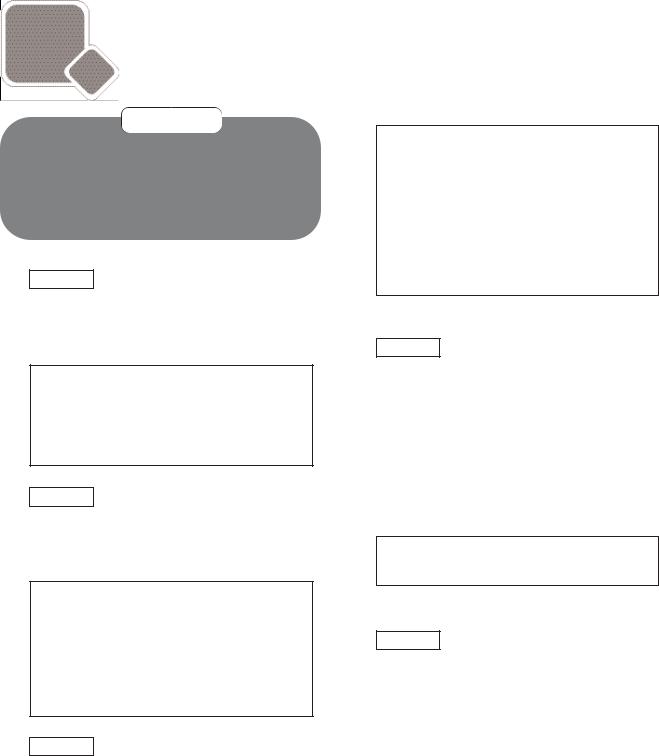
4 a Reading & Vocabulary
Objectives
Vocabulary: related to robots/technology Reading: reading for confirmation; reading for cohesion and coherence
Speaking: discussing the topic of a text Writing: making notes ; writing a summary
1Focus Introducing the topic of a text
Read through the three laws and discuss. Refer Ss to the pictures and elicit how the laws are related to the text.
Suggested Answer Key
Asimov’s law are about how robots should act. The text is also about robots and what they do. Both are discussing robot behaviour and technology.
2Focus Predicting the content of a text
ñIn pairs, have Ss discuss and decide what they think robots can do from the list in the rubric.
ñMonitor the activity and assist as necessary.
Suggested Answer Key
A:I think robots can vacuum the carpets, mow the lawn and climb stairs.
B:They may also be able to talk.
A:I don’t think they can do ironing or cook the dinner though.
B:Me, neither.
3Focus Predicting the content of a text/
Reading for confirmation
ñIn pairs, Ss discuss and answer the question in the rubric.
Suggested Answer Key
A:Robots can defiantly move and they must be able to follow instructions well. So they possess mobility and accuracy.
B:Yes. I don’t think they can think about themselves or reason on their own. So they don’t possess consciousness, intelligence or creativity.
A:I agree.
Reading
4Focus Reading for cohesion and coherence
(missing sentences)
ñEmphasise the importance of looking at the sentences before and after each gap to make sure the chosen sentence makes sense in that context.
ñSs complete the task and reread the text to ensure it makes sense.
ñInvite Ss to read out the text and check their answers.
Answer Key
1 D 2 F 3 B 4 A 5 E 6 C
Vocabulary
5Focus Practising vocabulary
ñHave Ss complete the task.
ñInvite Ss to read out their answers and check.
Answer Key |
|
|
|
|
1 |
become |
4 |
divided |
7 exist |
2 |
perform |
5 |
cater |
|
3 |
overcome |
6 |
built |
|
|
|
|
|
|
ñ Elicit pairs’ answers in class and write them on |
6 |
Focus |
Forming collocations |
|
the board. |
ñ Ss form collocations individually and then |
|||
ñ Ss read the text and check their answers. |
||||
|
compare answers with a partner. |
|||
|
|
|||
|
ñ Have Ss make sentences about the text. |
|||
|
ñ Ss tell their partner their sentences. Monitor |
|||
|
|
the activity and check for correct use of |
||
|
|
collocations. |
||
69
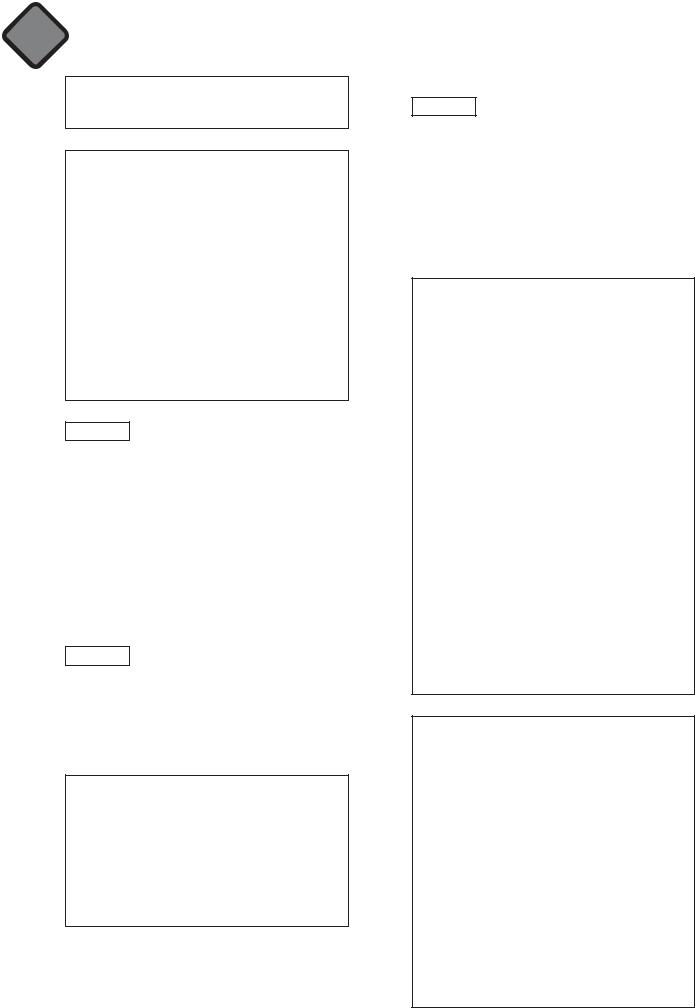
4a Reading & Vocabulary
Answer Key
1 D 2 E 3 B 4 A 5 F 6 C
Suggested Answer Key
1Nuclear power is a reality in modern day life.
2Robots must learn how to use figurative speech.
3Having household robots would make life easier.
4Scientists are trying to invent an artificial brain.
5 Robots cannot produce emotional responses.
6 Robots must overcome problems like language and how to understand expressions.
7Focus Practising vocabulary
ñHave Ss complete the task and check their answers in the Word List.
ñAs an extension, ask Ss to make up sentences with the incorrect word.
Answer Key |
|
|
|
|
|
1 |
invention |
3 |
problem |
5 |
obstacle |
2 |
reality |
4 |
clean |
6 |
common |
|
|
|
|
|
|
Speaking
8Focus Discussing a topic related to the text
ñRead through rubric with Ss and check for understanding of the task.
ñEncourage Ss to use the vocabulary and expressions they have learned in the unit.
ñMonitor the task and assist as necessary.
Suggested Answer Key
A:If I had a robot, my life would be easier. The robot would do all the housework and my homework. I could relax and play on my computer all day!
B:Yes, it would be great! The robot would make my bed in the morning and my breakfast too!
70
Writing
9Focus Summarising a text
ñRead the study skills box with Ss and check Ss understand it. Explain that Ss must make notes about the text under a main heading for each paragraph.
ñAllow Ss time to write their summaries using their notes. Alternatively, assign the task as HW.
ñInvite Ss to read their summaries in class.
Suggested Answer Key
Para 1 Where are the robots?
―authors wrote stories about robots in the future
―technology has advanced but there
are still no ‘household’ robots. Para 2 The human robots
―robots can do some things but there are no human-like robots
―difficult to build human-like robots Para 3 Problems
―scientists don’t know how to make a robot think
―scientists will study the human brain to find out more
Para 4 Movement and language
―robots can move
―scientists made ‘skin’ covering for robots
―language is a problem
Para 5 When will there be robot assistants?
―no one knows when human-like robots will be a reality
Suggested Answer Key
A lot of science-fiction writers wrote stories about household robots and the future. Many things they wrote about came true but we are still waiting for robots to cater to all our needs and express themselves like humans. Scientists have not yet been able to give robots the ability to think but they are working on it. However, scientists have made a robot which can walk, run and climb stairs. They can also make them to look more like humans with a human-like skin covering. Scientists have discovered that language is the biggest obstacle for robots and they are unsure of when we will have robot assistants which we can speak with.
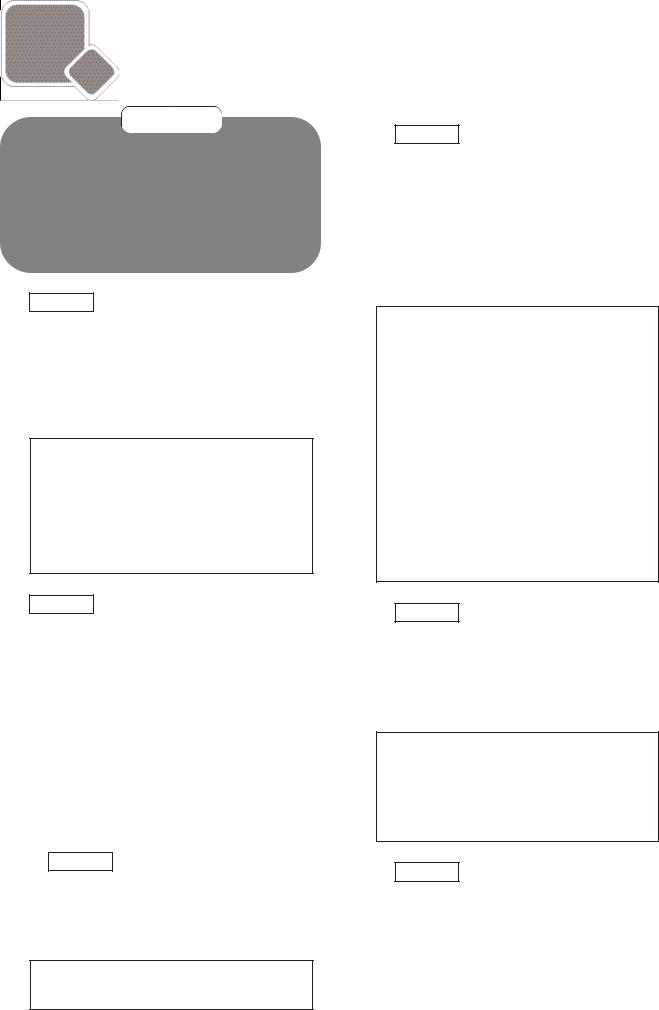
4 b Listening & Speaking
Objectives
Vocabulary: related to computer problems Reading: reading for confirmation; reading for specific information
Listening: listening for confirmation; listening for intonation; listening for gist
Speaking: role playing; discussing computer problems; practising intonation
1Focus Expanding vocabulary
ñRefer Ss to the mind map.
ñHave Ss brainstorm for as many words as they can related to the different headings/categories and copy their completed map into their notebooks.
ñHave Ss compare their maps with a partner.
Suggested Answer Key
Internet: connection, download, broadband, World Wide Web
computers: desktop, technology software: programmes, applications, files, documents
hardware: keyboard, mouse, screen
2Focus Understanding vocabulary
ñHave Ss complete the task and check their answers in the Word List.
ñAs an extension, ask Ss to make up sentences with the incorrect words.
Answer Key |
|
|
|
|
|
1 |
frozen |
5 |
connection |
9 |
hard |
2 |
save |
6 |
download |
10 |
work |
3 |
virus |
7 |
run out |
11 |
deleted |
4 |
connect |
8 |
spilt |
|
|
|
|
|
|
|
|
Everyday English
3 a) Focus Matching problems to solutions/
Presenting new vocabulary
ñHave Ss complete the task.
ñElicit answers in class and check Ss understand the vocabulary.
Answer Key
1 b |
2 d |
3 a |
4 c |
b) Focus Role playing/Discussing problems
(offering and responding to solutions)
ñRead the language box in class and check Ss understand the phrases.
ñIn pairs, Ss role play and discuss computer problems and offer/respond to solutions, using the phrases from the language box.
ñMonitor the activity and check for correct use of the vocabulary.
Suggested Answer Key
ñA: I’ve been trying for ages but I can’t connect to the Internet.
B:I suggest that you call your Internet service provider.
A:That’s not a bad idea.
ñA: Oh no! My computer has crashed.
B:The best thing to do is reboot the system.
A:Well, it’s worth a try.
ñA: I don’t believe it! I’ve lost some files!
B:How about running a search?
A:I’ve already tried that and it didn’t work.
4 a) Focus Predicting the content of a dialogue/Reading and listening for confirmation
ñHave Ss read the first two exchanges and elicit what the dialogue is about.
ñSs read and listen to the dialogue to check their answers.
Suggested Answer Key
I think the dialogue is about two friends who are having a telephone conversation. Adrian has a computer problem and Paul will try and help him fix it.
b) Focus Reading for specific information
(comprehension questions)
ñHave Ss read the dialogue and complete the task.
ñElicit answers in class and check.
71
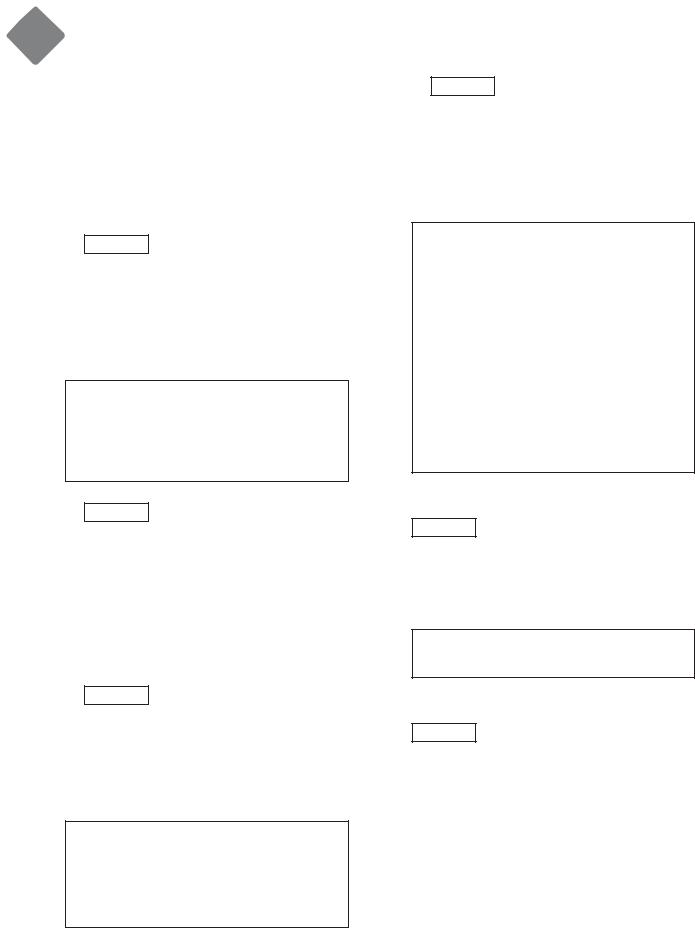
4b |
|
Listening & Speaking |
|
|
|
|
|
|
|
|
|
|
|
Answer Key |
|
|
1 |
his computer |
|
|
2 |
crashing |
|
|
3 |
sticks/gets stuck |
|
|
4 |
the computer off and on again |
|
|
5 |
a full scan with anti-virus software |
|
|
6 |
is a virus |
|
|
|
|
|
5a) Focus Understanding phrases/expressions
ñHave Ss complete the task.
ñRead out the statements and elicit phrases from dialogue.
ñCheck for understanding.
ñAs an extension, ask Ss to make up exchanges with the phrases in pairs.
Answer Key
1 What’s up? What is it?
2 I’ll try,
3 What exactly happens?
4You’re welcome.
b)Focus Listening for intonation/Practising
a dialogue
ñPlay the recording. Have Ss read the dialogue.
ñDirect Ss to pay attention to the intonation.
ñIn pairs, have Ss take roles and read the dialogue. Remind Ss to use the same intonation as in the recording.
Intonation
6 a) Focus Listening for/Practising intonation
ñPlay the recording and pause after each exchange and have Ss repeat the words in bold that they just heard.
ñSs listen again and mark the stressed syllables to identify intonation.
Answer Key
1 Well ... sort of.
2 Er ... you could say that.
3 Um ... in a way, yes.
4 Well ... I suppose so.
b)Focus Practising intonation
ñIn pairs, have Ss ask each other questions based on the prompts in the rubric.
ñDirect Ss to use the phrases in bold from Ex. 6a in their answers to the questions.
ñMonitor the activity and check for the correct intonation.
Suggested Answer Key
ñA: You have a lot of different hobbies, don’t you?
B:Well ... sort of.
ñA: Are you friends with everyone in your class?
B:Well ... I suppose so.
ñA: Do you take part in a lot of activities in your free time?
B:Er ... you could say that.
ñA: You really enjoy studying, don’t you?
B:Um ... in a way, yes.
Say it right
7Focus Understanding appropriate responses/
Listening for confirmation
ñHave Ss complete the task.
ñSs then listen to the recording and check their answers.
Answer Key
1 a |
2 b |
3 a |
4 a |
Speaking
8Focus Role playing a dialogue
ñRead the rubric with Ss and check for understanding.
ñDirect Ss to use expressions and vocabulary they have learned in the unit.
ñIn pairs, Ss act out their dialogue and record themselves.
ñMonitor the activity and assist as necessary.
72
